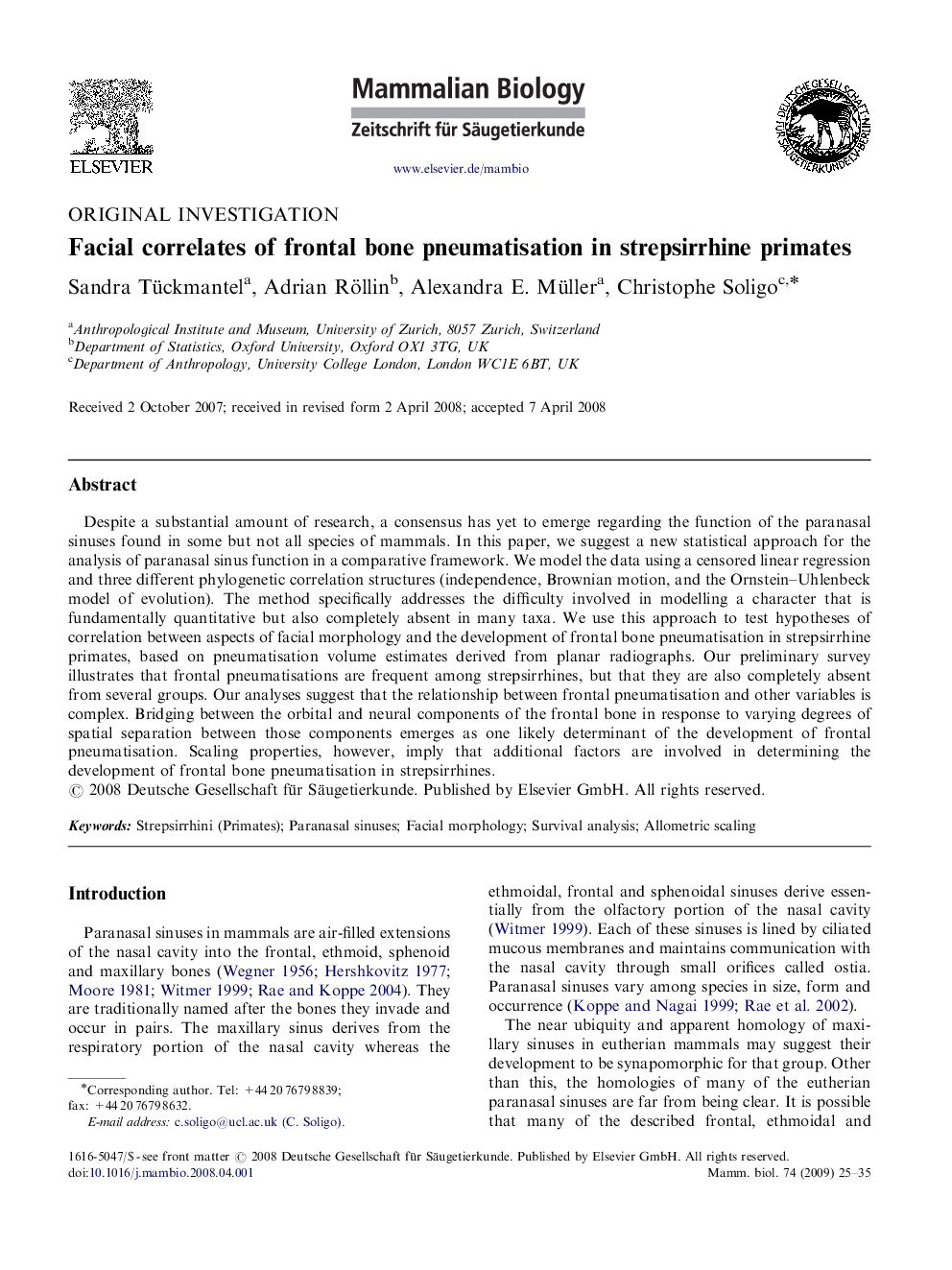| Article ID | Journal | Published Year | Pages | File Type |
|---|---|---|---|---|
| 2193988 | Mammalian Biology - Zeitschrift für Säugetierkunde | 2009 | 11 Pages |
Despite a substantial amount of research, a consensus has yet to emerge regarding the function of the paranasal sinuses found in some but not all species of mammals. In this paper, we suggest a new statistical approach for the analysis of paranasal sinus function in a comparative framework. We model the data using a censored linear regression and three different phylogenetic correlation structures (independence, Brownian motion, and the Ornstein–Uhlenbeck model of evolution). The method specifically addresses the difficulty involved in modelling a character that is fundamentally quantitative but also completely absent in many taxa. We use this approach to test hypotheses of correlation between aspects of facial morphology and the development of frontal bone pneumatisation in strepsirrhine primates, based on pneumatisation volume estimates derived from planar radiographs. Our preliminary survey illustrates that frontal pneumatisations are frequent among strepsirrhines, but that they are also completely absent from several groups. Our analyses suggest that the relationship between frontal pneumatisation and other variables is complex. Bridging between the orbital and neural components of the frontal bone in response to varying degrees of spatial separation between those components emerges as one likely determinant of the development of frontal pneumatisation. Scaling properties, however, imply that additional factors are involved in determining the development of frontal bone pneumatisation in strepsirrhines.
